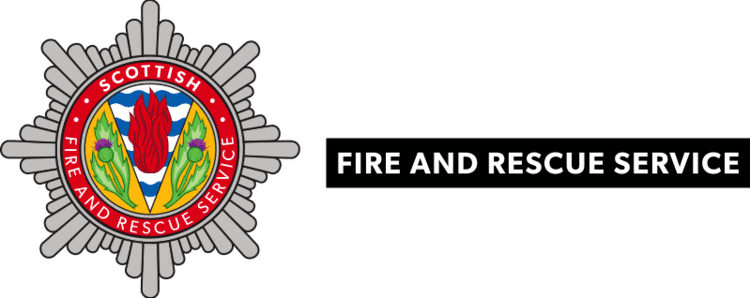Engines 533 | Employees 8,281 (2016) Stations 356 | |
 | ||
Established 1 April 2013 (1 April 2013) | ||
Dundee blue watch scottish fire and rescue service
The Scottish Fire and Rescue Service (SFRS; Scottish Gaelic: Seirbheis Smàlaidh agus Teasairginn na h-Alba) is the national fire and rescue service of Scotland.
Contents
- Dundee blue watch scottish fire and rescue service
- Dr ger fps com 7000 in use at scottish fire and rescue service
- Consolidation
- Structure
- Operations
- Water rescue
- Wildfires
- Medical emergencies
- Stations
- National Training Centre
- Impact
- References
It was formed by the merger of eight regional fire services in the country on 1 April 2013. It thus became the largest fire brigade in the United Kingdom, surpassing the London Fire Brigade, and the fourth-largest in the world.
Dr ger fps com 7000 in use at scottish fire and rescue service
Consolidation
After a consultation, the Scottish Government confirmed on 8 September 2011 that a single fire and rescue service would be created in Scotland to replace the eight existing services.
Following further consultation on the detailed operation of the service, the Police and Fire Reform (Scotland) Bill was published on 17 January 2012. After scrutiny and debate by the Scottish Parliament, the legislation was approved on 27 June 2012. The Bill duly received royal assent as the Police and Fire Reform (Scotland) Act 2012. This Act also created Police Scotland in place of the previous eight regional police forces. The mergers were effective from 1 April 2013. Eight months after the consolidation, an internal report said the reorganisation had not negatively affected operational response.
The service is headquartered are in Cambuslang, Glasgow, which also houses a national training centre opened in January 2013. There are a further three service delivery centres in the east, west and north of the country.
Structure
On 16 August 2012 the Scottish Government confirmed the first chief fire officer of the new service would be Alasdair Hay, then acting chief fire officer of Tayside Fire and Rescue Service, following an open recruitment exercise.
Pat Watters, former president of the Convention of Scottish Local Authorities, was also announced as chair of the service, an appointment to run for three years from September 2012.
Members of the SFRS Board appointed in October 2012 were Watters, Bob Benson, James Campbell, Kirsty Darwent, Marieke Dwarshuis, Michael Foxley, Robin Iffla, Bill McQueen, Sid Patten, Neil Pirie, Martin Togneri and Grant Thoms.
Operations
The Scottish Fire and Rescue Service attended 25,002 fires in 2014/15. The service also delivers a preventative programme, with 65,343 free home fire safety visits conducted in 2015/16.
As well as fighting fires, the service attends tens of thousands of specialist services such as road traffic collisions, water rescues and flooding incidents. In 2014/15 it attended 10,740 non-fire incidents.
Water rescue
The service works alongside other emergency services during flooding events to ensure the safety of communities and rescue people in difficulty, with specialist swift water rescue teams positioned on major waterways and areas of activity. Firefighters are routinely called out to water, flood and boat rescues. For example, during Storm Frank in December 2015 the SFRS received 350 flood related calls in the space of six days.
Wildfires
In 2015 the SFRS were called out to 78 wildfire incidents in total, with over half of those taking place in the north of Scotland.
Medical emergencies
In 2015 a national trial was launched, in partnership with the Scottish Ambulance Service, which has seen firefighters receive enhanced CPR training aimed at increasing survival rates for people who suffer out-of-hospital cardiac arrests.
Stations
As of March 2016, the SFRS operates 356 stations throughout Scotland. Stations are split into three categories:
The most northerly station is Baltasound on the Shetland Islands. The most southerly is a volunteer station in the village of Drummore in Dumfries and Galloway.
National Training Centre
The Scottish Fire and Rescue Service National Training Centre opened in January 2013. The facility in Cambuslang features a mock town with ultra-realistic motorways, railway tracks and buildings, including a multi-storey tenement structure.
Impact
The following services were merged to create the Scottish Fire and Rescue Service:
The number of control rooms handling 999 calls was also reduced from eight to three. This was further reduced in December 2016 to just two control centres.
The consolidation of regional call centres has reportedly resulted in a number of dispatching errors. For example, in December 2016 a crew from Raasay was mobilised to an incident on Skye — a journey that would have required taking their fire engine on a ferry — despite an alternative crew being able to reach Skye directly via a road bridge. On another occasion, a crew from Beauly was sent to a blaze 10 miles away in Dingwall as the dispatcher was allegedly unaware Dingwall had its own fire station.
